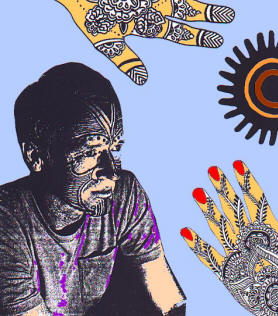
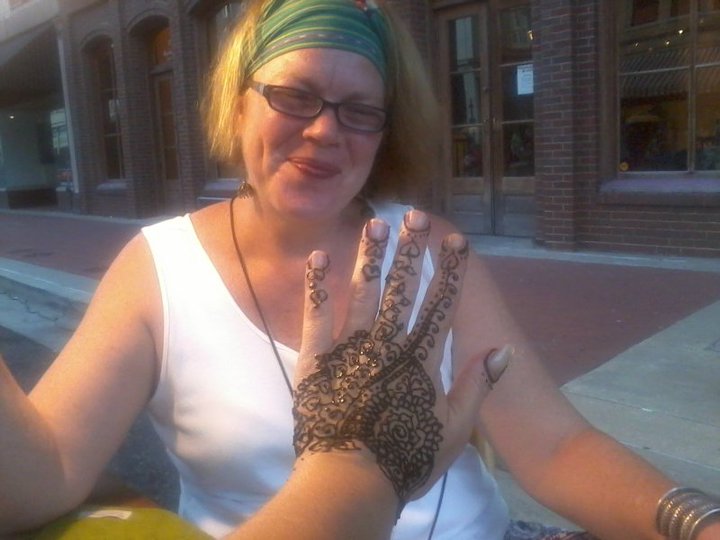
Mehndi Body Art
The painless henna tattoo that fades away!
Available for appointments and parties in Paducah, Kentucky!
Get some summer color!
Have some fun! Have a henna party!
A henna party could be a bunch of girls over for pizza and movies, an event at a store or art opening, a wedding reception, a baby shower, or an individual appointment. It’s great fun and I’ve done them all!
$50 an hour (two-hour minimum)
- Three hours means about 15 people get a good-sized design.
- Hands and feet get the best color result.

Mehndi, the Hindi word for henna, refers to the staining of the skin by the henna plant. Literature on henna may also refer to it as Mehandi or Mendhi. The fine powder, mixed with oil and tea, leaves a stain lasting ten days to 2 weeks. India and Pakistan have taken this ancient practice to a high level art form, with mehndi artists becoming renowned for their design styles and mixing techniques.
The West has known henna previously only as a natural hair dye. It became popular as Body Art in the mid-1990’s with movie and music stars (“Prince”, Sorvino, Madonna, and others) showing it off at events and performances. Women and men experiment with Mehndi art, finding it a painless option to tattooing, while enjoying endless possibilities of new designs.
Time Commitment
It depends on the design. A simple flower may take 10 minutes to draw, an intricate design can take two hours. After the henna is applied, it dries, hardening and shrinking. When it begins to crack, a sugar/lemon mixture is applied to help fix the paste. Leave the paste on for as long as possible, hopefully four hours. You may then scrape it off, but do not wash the area for twelve hours.
I began taking henna customers in May 1997 and have since enjoyed drawing on hundreds of hands and feet.
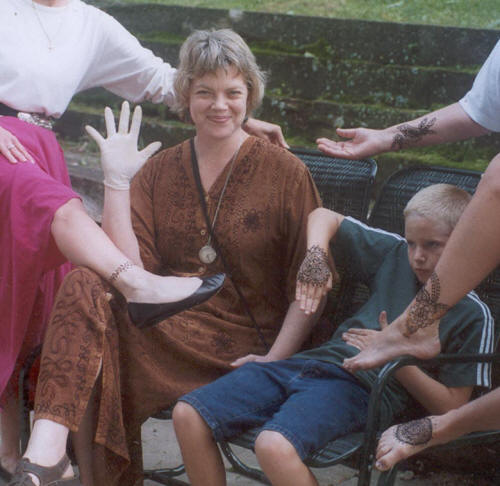
.
[portfolio_slideshow id=905]
Mehndi body art has ancient roots in the Asian subcontinent (India, Pakistan, Bangladesh), most Arab countries, and in Northern Africa. Overwhelmingly, it has traditionally been used as a women’s celebratory practice in preparation for weddings and festive holidays. In some areas, by far a minority, men may also have small decorations on their faces or plain henna treatments on their hands and feet. In India, women gather for “Mehndi night” before weddings. They decorate each others’ hands and feet, with the bride receiving intricate designs up to the elbows and knees. Moroccan brides are given embroidered mitts and booties that protect the design throughout the night. Indian folk lore states that a bride with deep, rich mehndi color will truly love her husband and will have good relations with her in-laws. She is also exempt from housework while the color lasts.
Designs and mixes vary regionally, reflecting local raw materials and traditional patterns used in textiles, crafts and architecture. Indian, Pakistani and many Arab countries lean towards floral and organic forms. Moroccans prefer bold geometric contrasts, often using stencils echoing tile work and lattice shapes. Egyptians simply stain the bottoms of their feet and the palms of their hands red. From big red dots to fine, intricate work, henna skin dyeing predates Biblical history and has even been found on the fingertips of Egyptian mummies!!!
The designs appear to have little symbolic meaning, with most native Indians referring to it as a practice of adornment and celebration. However, they do mention that henna is considered to have a cooling effect, lowering one’s blood pressure. Sir Richard Burton, explorer of the origin of the Nile, recounted in his memoirs that they would use a henna wash as a sunscreen when traveling through desert areas. Aside from practical aspects, perhaps the color originally had significance. Many cultures use red as a protection against the evil eye. The Moroccan hand of Fatima, a protection amulet, usually bears designs resembling Mehndi Body Art. Symbolic content may have been lost over the centuries. Yet, most women using mehndi, live in hot climates where they modestly expose little of their bodies. If hands and feet can be exposed, why not decorate them?
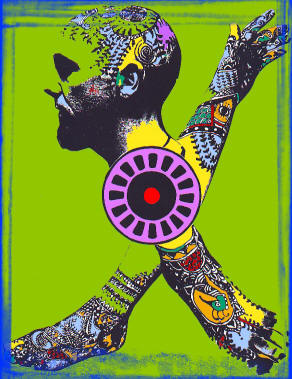 As in the case of hair dyeing, different shades of brown, maroon and black henna are available for skin. However, each person reacts chemically to the henna in a unique way. Factors include body heat and acidity, pore size and environment. Heat seems to help. Bake the design in the sun or take a hair drier to it.
As in the case of hair dyeing, different shades of brown, maroon and black henna are available for skin. However, each person reacts chemically to the henna in a unique way. Factors include body heat and acidity, pore size and environment. Heat seems to help. Bake the design in the sun or take a hair drier to it.
Mehndi body art traditionally is done on hands and feet for a very practical reason: that’s where the dye takes best. The further away from the extremities you go, the lighter it will be. The henna is brightest and lasts longest on the palms of the hands and soles of the feet. These pores, called glass pores, have no melanin nor hair follicles to take up space. On the top of the hand, there exists a visible change in color at the base of the fingers (brightest), at the wrist, and at the elbow (lightest). Clue: Upper armbands don’t get very dark. Mehndi seems to last longest on feet and legs, and if the nails are stained, they will remain so until they grow out (yish…).
Black henna that works seems to be tricky to source. Many Mehndi artists report muddy results and most black henna available at Indian stores washes right out. They only use red and brown shades, while Northern Africa uses the black for skin dyeing. If you want the black, seek an Arab source. However, beware of pre-mixed concoctions coming from abroad. Reports have indicated that some recipes call for tar, lighter fluid and even battery acid. Lovely.
Commercial dyes in vibrant colors are available through the internet and trendy stores that sell henna products. However, they may not last long. Allergic reactions have been reported in using black henna.
THE MIX:
1/2 CUP OF HENNA POWDER
1 TSP. MUSTARD SEED OIL
10 DROPS EUCALYPTUS OIL
1/2 TSP. SUGAR
1/4 CUP LEMON JUICE
1/4 CUP BLACK TE
APPLICATION:
1. Wear a rubber glove to protect your hand from the stain as you draw.
2. Clean the surface of the skin where you will apply the henna. Scrub well or rub with alcohol and cotton, exfoliating as much as possible.
3. Transfer henna mix from bowl into cone or whatever you will use. A pastry bag works well. Some people use squeeze bottles, toothpicks or ink pens. Moroccans use a syringe without the needle, while Indians make a cone out of heavy plastic. Experiment to find what works best for you.
4. Squeeze as you draw, making sure that the henna is lying in contact with the skin. Correct mistakes by wiping immediately with alcohol and swab or by flicking excess with a needle or toothpick.
5. As the henna dries, it loses its sheen, darkening, hardening, and shrinking. Have a soupy mixture of lemon juice and sugar ready in a small bowl to the side. When the design starts to crack, gently dab it with a cotton ball. Make sure the henna is stiff enough or it will smoosh. Don’t soak it- the design will blur, and if the mixture is too sticky, it will pull up the design. The idea is to shellac the design with the mixture, keeping it moist and flexible. Check for areas that need extra henna, especially in large filed-in areas.
6. Juice the design several times as it dries. Be especially careful with bending areas (wrists, fingers, ankles, etc.) as these blur easily. Now for the hard part: sit and wait patiently. Read a book, watch a movie, make a plan to bring about world peace. After four hours, scrape off the henna (bathtub or sink) and rub mustard seed oil onto it with a washcloth. Or, another greasy replacement will do (olive oil, Vaseline). Goal: Clog those pores!! Do not wet area for 12 hours, as water stops the chemical reaction that promotes the stain. The design should look bright orange at first and will continue to darken throughout the next day.
TIPS:
Buy henna powder at an Indian store or order it online. Make sure it is for the skin and not just for hair. Sift it well into a small porcelain or metal bowl using an old nylon stocking stretched over a bowl. The tea must be strong, black, and boiling. It contains tannic acid which helps release the color. Sugar and mustard seed oil give the paste fluidity and help it adhere to the skin. Eucalyptus oil opens the pores, allowing good reception.
The paste should look like chocolate frosting, not too thick nor too runny. Add powder or lemon juice as needed to reach good consistency. Let it sit overnight. The mix should be good for a week at room temperature. You can refrigerate it.
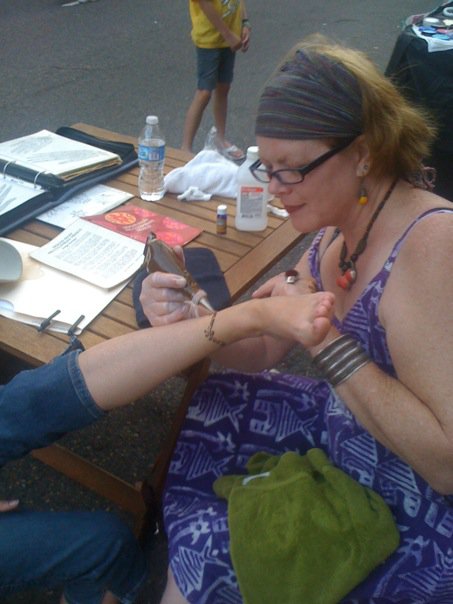
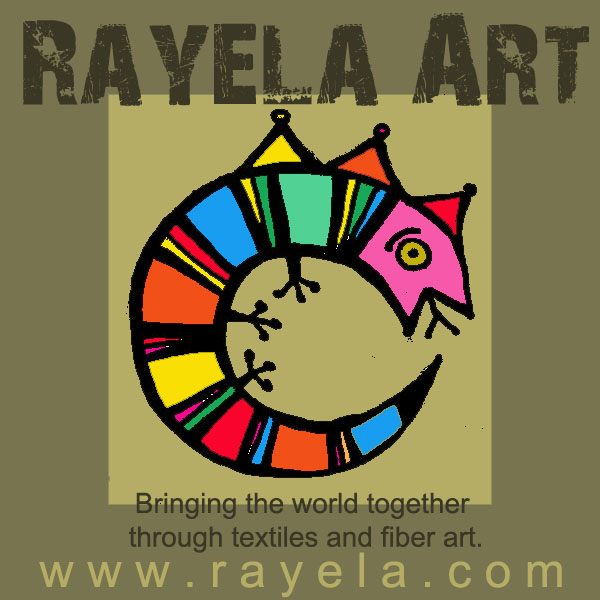
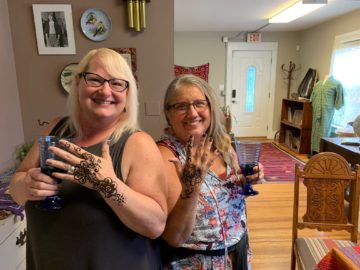


Hi Rayle,
Really cool idea. When people are running around to make permanent tatoos, henna as body part is an amazing idea. I saw a video online which shows easy mehndi designs, i think that would help you. Here is link https://www.youtube.com/watch?v=M3SHY9_OwvQ
Nice! Thank you, Saba!